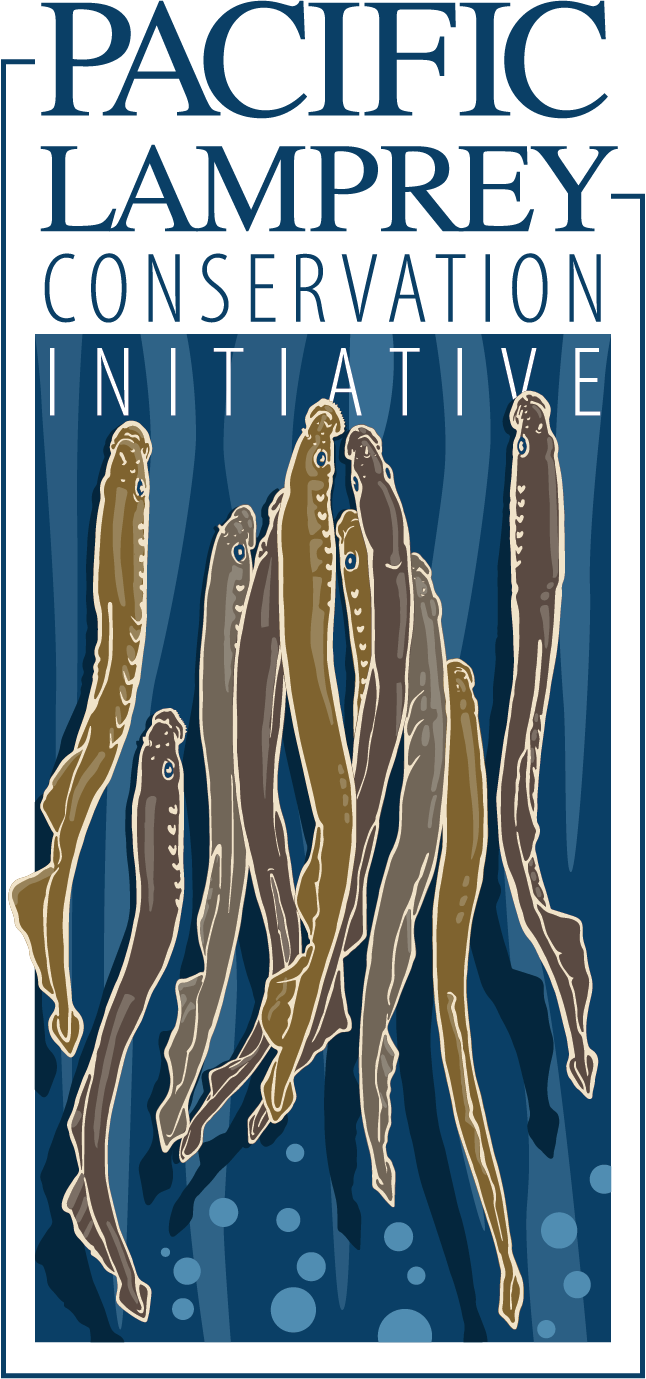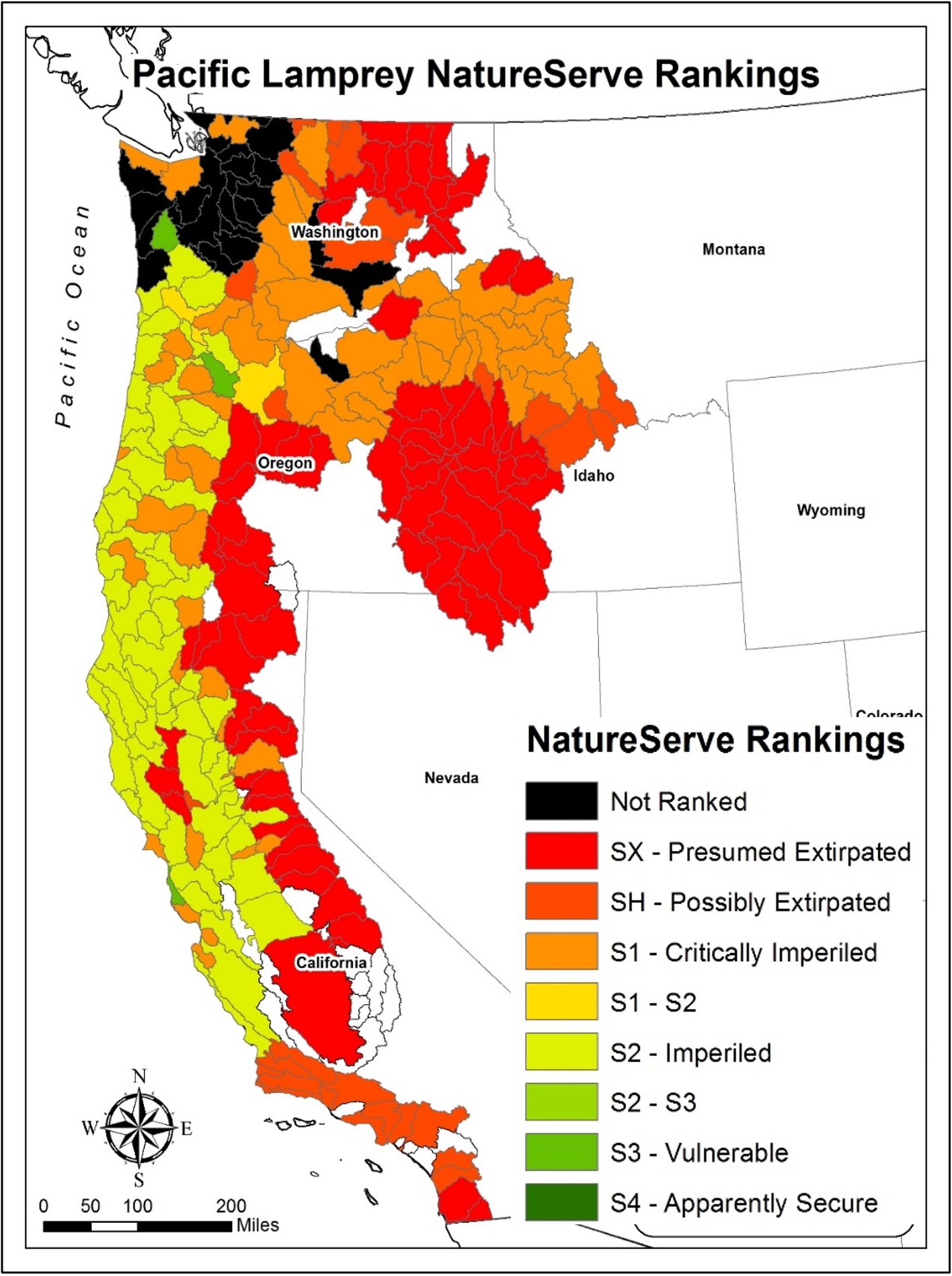Pacific Lamprey Assessment
2022 Pacific Lamprey Assessment
Every four to five years the the Pacific Lamprey Conservation Initiative (PLCI) and its partners evaluate Pacific Lamprey habitat conditions, population demographics, distribution, and threats. This information is used to inform NatureServe, a diagnostic tool that characterizes conservation risks of Pacific Lamprey across their historical range.
In 2022, PLCI and its Regional Management Units (RMUs) revised the Pacific Lamprey Assessment. The Assessment ranks population demographic and threat factors to describe the current species range and status, compares current to historical status, and calculates the relative risk to extirpation of Pacific Lamprey at the 4th field HUC watershed level.
In addition to information in the Pacific Lamprey Distribution Database, the local knowledge and expertise of each of PLCI’s 18 RMUs is pivotal to revising the Assessment. To support and inform the 2022 Assessment revision, each of the RMUs met to discuss needed changes to the Assessment ranks and to determine the final ranks to be entered into the NatureServe model based on their collective local knowledge.
In addition to the important updates to information in previous Assessments, the 2022 Assessment addresses information gaps in Coastal Washington and Alaska.
The first Assessment was completed in 2011/2012 in preparation for Lamprey Summit III. Previous versions can be found here:
Interested stakeholders are invited to contribute to future Assessments and encouraged to reach out to RMU leads about upcoming meetings and other ways to participate.
Calculated NatureServe risk ranks for Pacific Lamprey (2018).
Evolution of the Assessment
The U.S. Fish and Wildlife Service (USFWS) hosted the Pacific Lamprey Conservation Initiative Work Session on October 28-29, 2008 in Portland, Oregon. The purpose of the Work Session was to bring managers and scientists with various skills and expertise together to facilitate communication on the current status and ongoing efforts to conserve Pacific Lamprey and to begin development of a collaborative, range-wide Conservation Plan.
The general objectives of the Work Session were:
- Develop an outline of existing knowledge, data, and information about Pacific Lamprey
- Identify uncertainties or knowledge gaps related to these topics.
The full proceedings of the 2008 Work Session can be accessed here.
Partner Assessments for Pacific Lamprey
Several partners have also worked to create Pacific Lamprey assessments outside of the Initiative process. These important documents supplement the analysis conducted for assessments listed above.
Tribal Pacific Lamprey Restoration Plan
Pacific Lamprey provided an important source of food for the tribes of the Columbia River Basin. Once returning to the Columbia River and its tributaries by the millions, approximately 48,000 returned to Bonneville Dam in 2011. To address this decline, the Columbia River treaty tribes created the most comprehensive plan for Pacific Lamprey that the Columbia Basin has seen.
U.S. Army Corps of Engineers 10 Year Lamprey Plan
The goal is to identify specific actions that can be taken to improve lamprey passage at U.S. Army Corps of Engineers (USACE) dams along the lower Columbia and Snake rivers.
Oregon Department of Fish & Wildlife
The following include the Oregon Department of Fish and Wildlife (ODFW) 2005 Pacific Lamprey assessment sections from the Oregon Native Fish Status Report
Idaho Department of Fish & Game
In 2011, Idaho Department of Fish and Game conducted a status report on Pacific Lamprey in Idaho.
©2022 Pacific Lamprey Conservation Initiative

